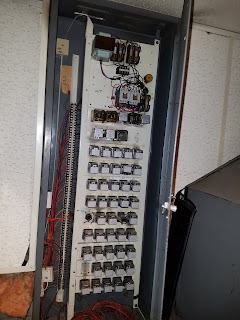How long should a
hydraulic control valve last? This is a very good question. The valve manufacturer states that their
valve will last 10-15 years. Many
buildings keep their valves as long as 30-45 years. The issue with keeping your control valve longer than recommended is you can have reliability issues and leakage.
Reliability/control
– When
we have valve reliability issues we cannot control the elevator which means the
elevator will not level properly. We can
start to see shut downs or trip and falls when the valve is having reliability
issues.
Leakage – A valves parts will
begin to leak and this will also cause leveling issues but it will also create
a oily mess when it is leaking on the tank or on the floor.
We
have elevator control valve manufacturers saying change your valve every 10-15
years, buildings keep their valves sometimes 30-45 years. We have a huge disparity between these numbers. Each building’s usage, environment and oil
maintenance[replacement, filtration, tank cleaning] is different. A sleepy building’s elevator valve could last
a lot longer than a valve in a hospital or nursing home. You should consult your elevator contractor
on how long your valve will last as there is a safety issue and reliability issues when your control valve is not operating properly.
Here
are some pictures of a few building’s I have been to in the last week. All the buildings have the same elevator,
Otis early 1970’s vintage power unit.
[This
is the original control valve, it appears the elevator contractor is trying to
identify where the leaking is coming from or dressing it up for Halloween. This valve needs to be replaced]
[This control valve has been replaced[not by Colley] but they put the adjustments right up against a pipe so it is very difficult to work on, this probably was faster to install but not easy to work on in the future]
[This is a valve Colley Elevator replaced which took a little extra time to make sure all of the control adjustments are accessible to the elevator mechanic]
Should I replace my oil
when I change my control valve? – The answer to this question is yes, unless
you have changed your oil recently prior to the valve replacement. We will address hydraulic oil maintenance in
a future post. Or you can see a post
from a few years ago.
http://colleyelevator.blogspot.com/2016/05/cleaning-elevator-hydraulic-fluid.html
If
you have any questions or would like additional information feel free to
contact me at CraigZ@colleyelevator.com or
630-766-7230 ext. 107.
Also
check us out on Instagram @Colleyelevator see what we have been up to.





















